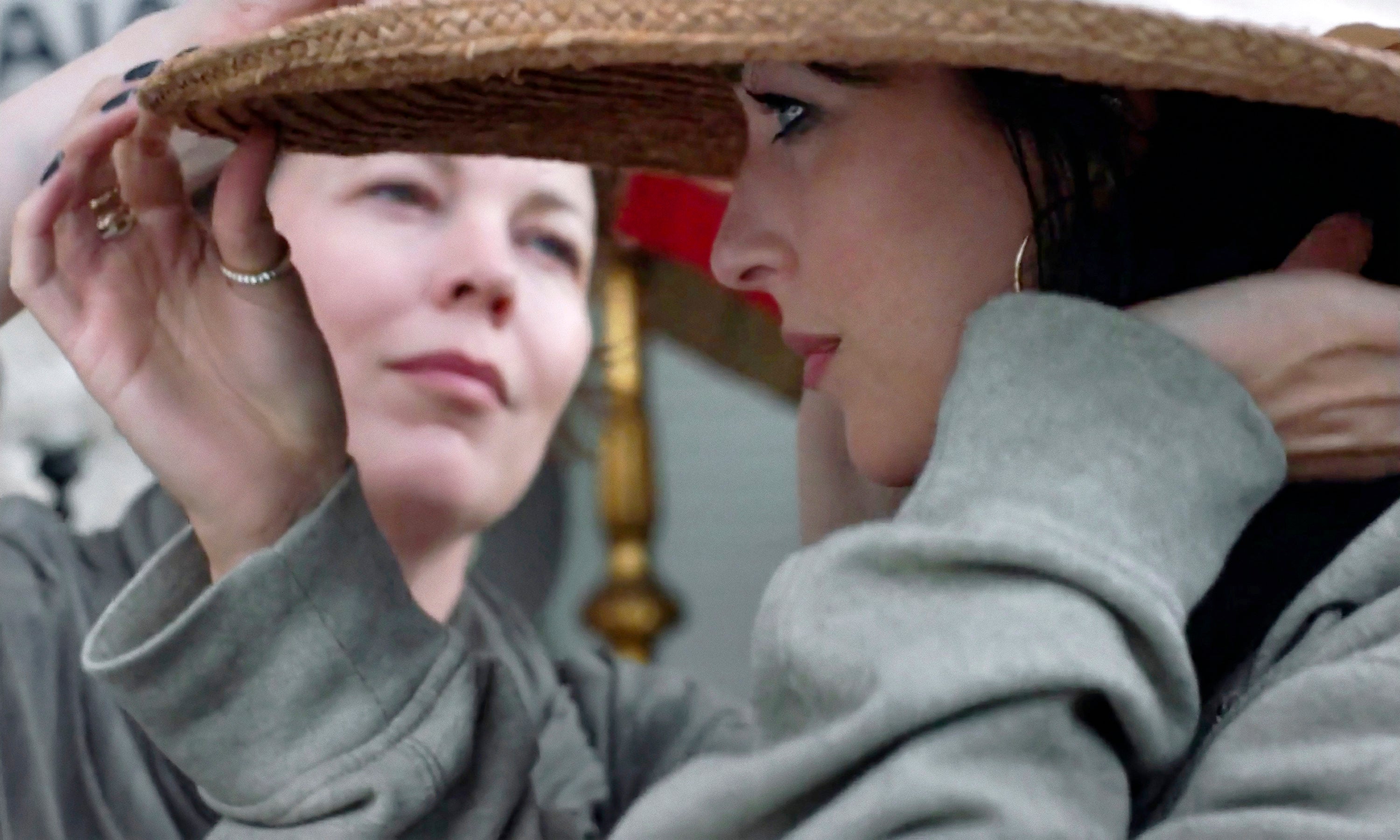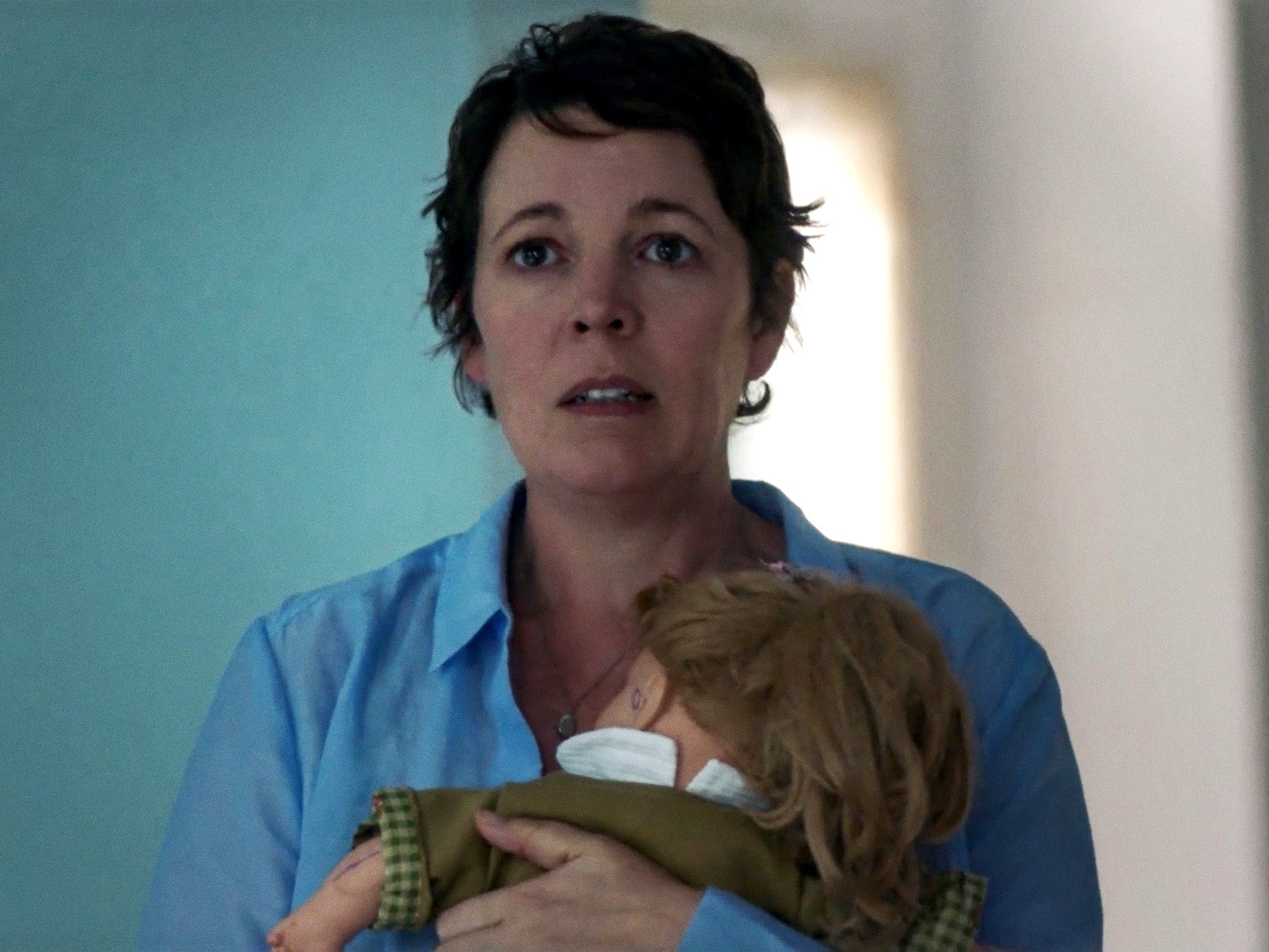The Lost Daughter and the darker side of motherhood
While key parts of Ferrante’s original narrative are well conveyed in the film, some vital contextual elements get lost in translation, writes Katrin Wehling-Giorgi

Your support helps us to tell the story
From reproductive rights to climate change to Big Tech, The Independent is on the ground when the story is developing. Whether it's investigating the financials of Elon Musk's pro-Trump PAC or producing our latest documentary, 'The A Word', which shines a light on the American women fighting for reproductive rights, we know how important it is to parse out the facts from the messaging.
At such a critical moment in US history, we need reporters on the ground. Your donation allows us to keep sending journalists to speak to both sides of the story.
The Independent is trusted by Americans across the entire political spectrum. And unlike many other quality news outlets, we choose not to lock Americans out of our reporting and analysis with paywalls. We believe quality journalism should be available to everyone, paid for by those who can afford it.
Your support makes all the difference.Since the enormous success of Elena Ferrante’s Neapolitan Novels, Italy’s leading female author, who famously writes under a pseudonym, has become a global phenomenon with a name of its own: Ferrante Fever. Saverio Costanzo’s HBO television drama My Brilliant Friend, based on the author’s four-part novel, has only further widened her appeal. Ferrante’s lesser-known third novel The Lost Daughter has now been adapted into a Netflix movie by Maggie Gyllenhaal.
When Leda (Olivia Colman) goes for a holiday on a fictional Greek island, her peace is soon disrupted the large, noisy American family staying on the same beach. The seemingly idyllic relationship between young mother Nina (Dakota Johnson) and her daughter Elena stirs uncomfortable memories of Leda’s own mothering.
Elena is particularly attached to her doll Nani, who will turn out to play a central role in Leda’s reckoning with her troubled past. This unravels in a series of flashbacks that depict her breaking some of the sacred taboos of motherhood by putting her needs and ambitions before those of her daughters. We witness how she struggled to cope with the demands of childcare, and how she left her young children in order to pursue a career as an academic.
The film powerfully captures the symbiotic yet suffocating relationship between young mother Nina and her child. A series of claustrophobic extreme close-ups and frantic, handheld shots effectively convey the tension. These include some beautiful episodes that show the intimacy and almost fluid entanglement of mother, child and the doll’s bodies as they frolic on the beach.
Yet a perilously pointed knife in the first flashback foreshadows the darker sides of motherhood in moments of apparent lightness. The disappearance of Elena (who gets lost on the beach and is found by Leda) and then the doll Nani (in a gratuitous act of theft by Leda) unleashes inner turbulence in Leda and disrupts Nina and Elena’s seemingly perfect mother-daughter union. Through the sympathetic eyes of Leda, Nina is shown struggling with the constant demands of her young daughter, which she is left by her husband to bear alone, and will eventually admit to having “depression, or something”.
In the book, Leda’s choices emerge from a childhood affected by domestic violence and a lack of social mobility that particularly concerns women
While key parts of Ferrante’s original narrative are well conveyed in the film, some vital contextual elements get lost in translation.
A trauma passed down
In the movie, Nina’s ambiguous maternal feelings are associated with post-natal depression, a pathology that remains under-represented in contemporary film and literature. However, Ferrante’s Lost Daughter does not include any references to a medical disorder. Rather, the author attributes maternal discontent to a broader existential inner turmoil affecting women, that has its roots in the violent gender dynamics of Leda’s harsh upbringing in patriarchal Neapolitan society. This is lost in the adaptation from book to screen.
In the book, Leda’s choices emerge from a childhood affected by domestic violence and a lack of social mobility that particularly concerns women. The internal turmoil first experienced by Leda’s mother, and subsequently by Leda, hence can be traced back to a transgenerational trauma passed down from mothers to daughters that goes well beyond (post-natal) depression.

The differences in setting are also important: while the movie is set on a fictional Greek island, in Ferrante’s original account Leda’s encounter on the beach takes place in southern Italy, and features a family with links to the Camorra (the Neapolitan mafia), stirring some deeply unsettling memories of her Neapolitan upbringing.

Watch Apple TV+ free for 7 days
New subscribers only. £8.99/mo. after free trial. Plan auto-renews until cancelled

Watch Apple TV+ free for 7 days
New subscribers only. £8.99/mo. after free trial. Plan auto-renews until cancelled
In the movie, Leda runs the risk of coming across as an entitled, intellectual snob. But by neglecting to tell the story of her upbringing in a poor neighbourhood of Naples and its criminal underworld, the film misses out on an essential component of Ferrante’s writings that make the setting a vital part of the plot. This aspect is rather diluted in the film into what at times appears as an awkwardly engineered Italo-Greek-American backdrop. It fails to capture the significance of Leda’s emancipation from a complex, and often oppressive condition of women in the Mediterranean South.
Ferrante’s novel includes several flashbacks to her mother’s violent outbursts in Neapolitan dialect (a trigger in Leda’s encounter with the clan on the beach), which explain the pent-up rage often directed against her children – these are left out from the movie, so that some nuances go overlooked.
While Leda’s own mother forms an essential part of Leda’s soul-searching in the novel, she is only once referred to in the film as “the black shithole … that I came from”. The absence of this lineage of mothers in Gyllenhaal’s film fails to account for the damaging effects of mothering under the shadow of male violence.
Gyllenhaal’s film will no doubt play an important part in enhancing the understanding of and stimulating debate about the ambivalences of motherhood, unhinged from its societal and cultural constraints. Yet Ferrante’s work provides a powerful subtext to the film that should be read by anyone interested in the complexities of motherhood, and indeed, the female condition at large.
Katrin Wehling-Giorgi is an associate professor at Durham University. This article first appeared on The Conversation.




Join our commenting forum
Join thought-provoking conversations, follow other Independent readers and see their replies
Comments